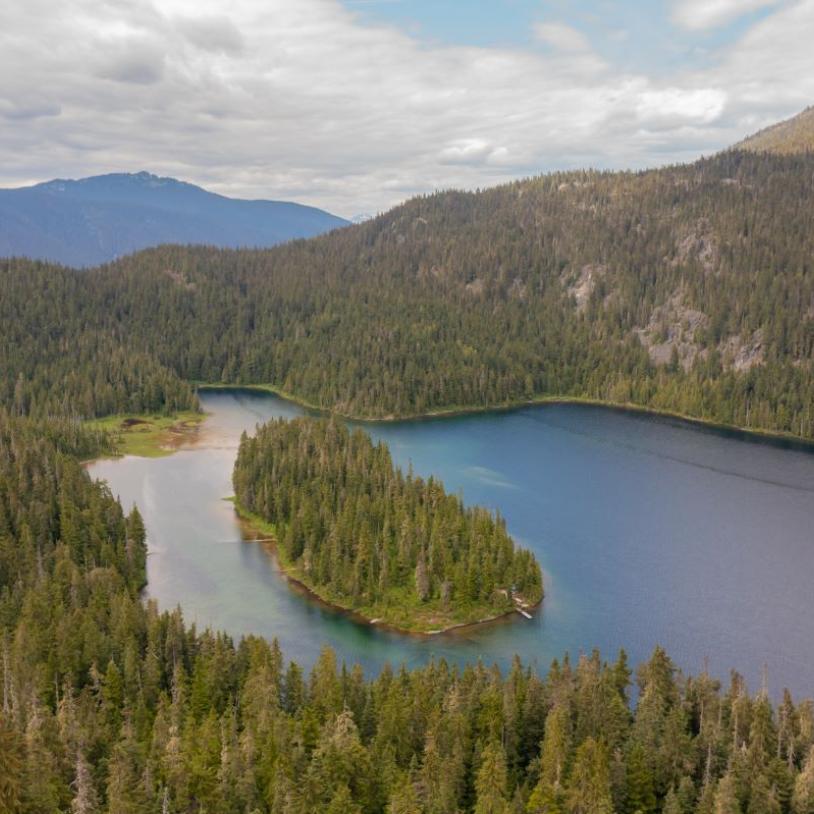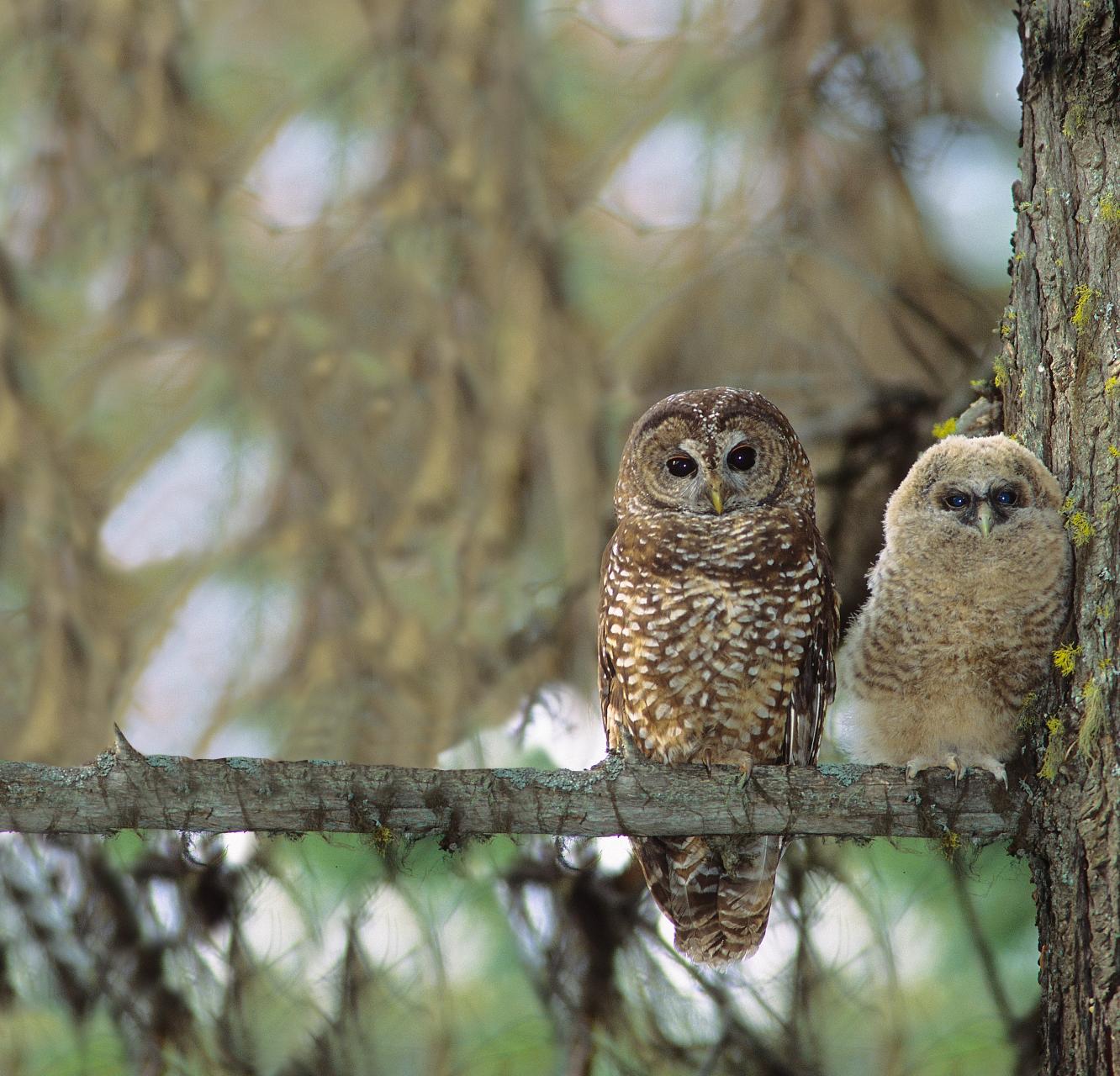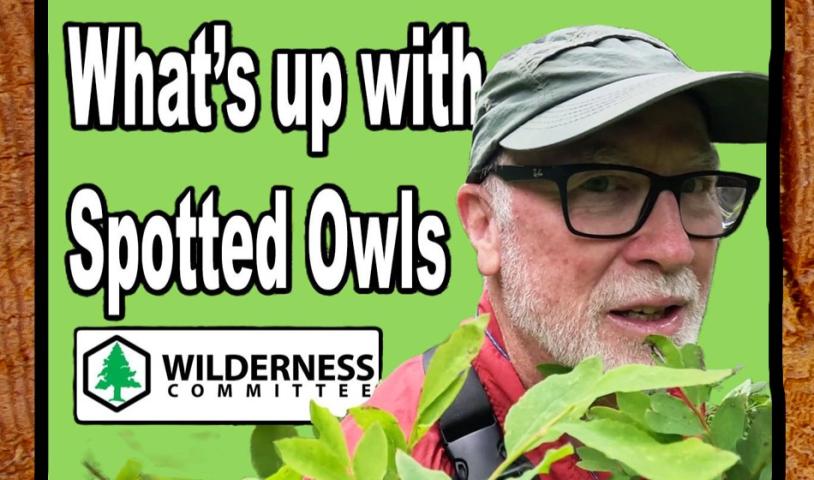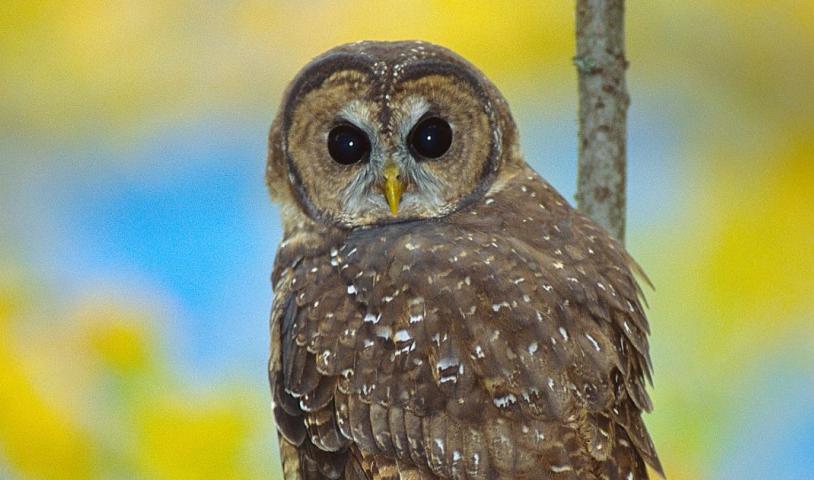Bureaucrats slam B.C. plan for saving the spotted owl
Wednesday, September 12, 2007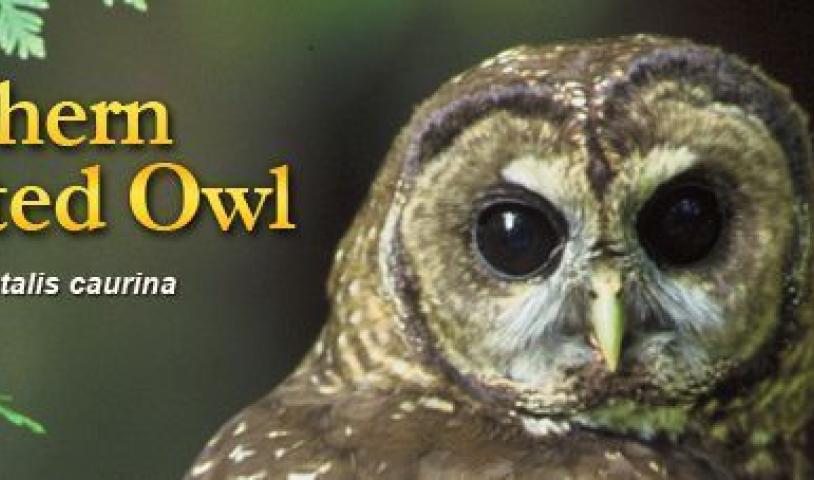
In internal e-mails, officials decry a program as catering to logging
Provincial and federal government bureaucrats have delivered a damning indictment of the B.C. government's plan to save one of Canada's most endangered species -- the northern spotted owl -- according to internal e-mails last year obtained by The Vancouver Sun through freedom-of-information legislation.
The e-mails contain complaints the B.C. government is using misleading figures to support its recovery plan for the owl, reveal intergovernmental squabbling over management, and assert the province is catering to the logging industry at the expense of the species' future.
Much of the criticism stems from biologists in the Ministry of Environment frustrated with the Ministry of Agriculture and Lands, which has jurisdiction.
But one of the strongest indictments comes from David Cunnington, senior species-at-risk biologist for Environment Canada in Delta, who lambastes the province for its policy of augmenting spotted owls through measures such as captive breeding while failing to protect sufficient old-growth habitat.
"This kind of approach can be characterized as halfway technology, putting a Band-Aid on a heart attack, or treating the symptom instead of the disease, and is a great example of fiscal inefficiency," Cunnington writes.
He also notes that of 363,000 hectares designated for spotted owls, only 48 per cent is suitable habitat and even then contains large parts in which owls have never been located. Harvesting has occurred in valley bottoms leaving "disconnected sub-optimal habitat for owls on valley sides," he writes.
Myke Chutter, the province's bird specialist, said in an e-mail provincial efforts amount to a "cop-out" and "a recipe [for] extirpation over time."
Chutter worries that discussions over owl recovery have "centred on what [timber] licensees may or may not be willing to do rather than what the owl needed."
But Liz Williams, manager of wildlife and land management initiatives in the agriculture and lands ministry's Species at Risk Coordination Office, writes that she is interested in "ideas and useful suggestions that are implementable within the framework laid out by elected officials."
Agriculture and Lands Minister Pat Bell said he appreciates spotted owl management is a "highly emotional issue" but insists the government has struck the right balance.
"We take the species very seriously," Bell said in an interview. "We want to see it recover. A significant amount of their range is being managed for their habitat."
He added that without captive breeding the spotted owl is doomed, saying "it will ensure the extinction of the species, beyond a shadow of a doubt."
Gene MacInnes, operations manager for the Chilliwack forests district, expresses concern in an e-mail about "long-term sustainability" of logging in the Fraser timber supply area due to a provincial policy that requires no net loss of logging due to spotted owl protection.
MacInnes notes that logging agreements with 12 first nations over the next two years will affect 273,000 cubic metres of timber and 30 planned new wildlife habitat areas, adding: "All these issues have made finding viable timber supplies difficult."
Just 17 spotted owls, including five pairs, are known to exist in the wild in 12 locations in southwest B.C., the northern end of a range that extends south to California. The spotted owl is also endangered in the U.S.
Bell used the 363,000-hectare figure in April 2006 when announcing a five-year, $3.4 million recovery strategy for the spotted owl.
Of the 363,000 hectares, 182,000 are within parks and protected areas, and 181,000 are managed to retain 67-per-cent suitable habitat for spotted owls, according to the Species at Risk Coordination Office.
The strategy calls for measures such as captive breeding and release, moving spotted owls to new locations, increasing food sources and managing competing species, along with protecting nine Wildlife Habitat Areas in which surveys in 2005 detected spotted owls.
The Western Canada Wilderness Committee has set up a camp at S & M Creek, about 20 km east of Pemberton, which has a long history of owl activity that is being logged despite the presence of one owl.
WCWC spokesman Joe Foy said the owl was heard hooting as recently as Tuesday night at the logging site.
Acting under the provincial recovery strategy, officials this summer captured two wild owls for captive breeding, and are trying to capture a third at S & M Creek. The strategy is to leave pairs in the wild that are likely to breed, but collect individuals that are unlikely to find a mate.
"We are constantly updating our data," he said. "If we identified a mating pair that we think had significant potential to add to the population we would immediately take action."
lpynn@png.canwest.com
